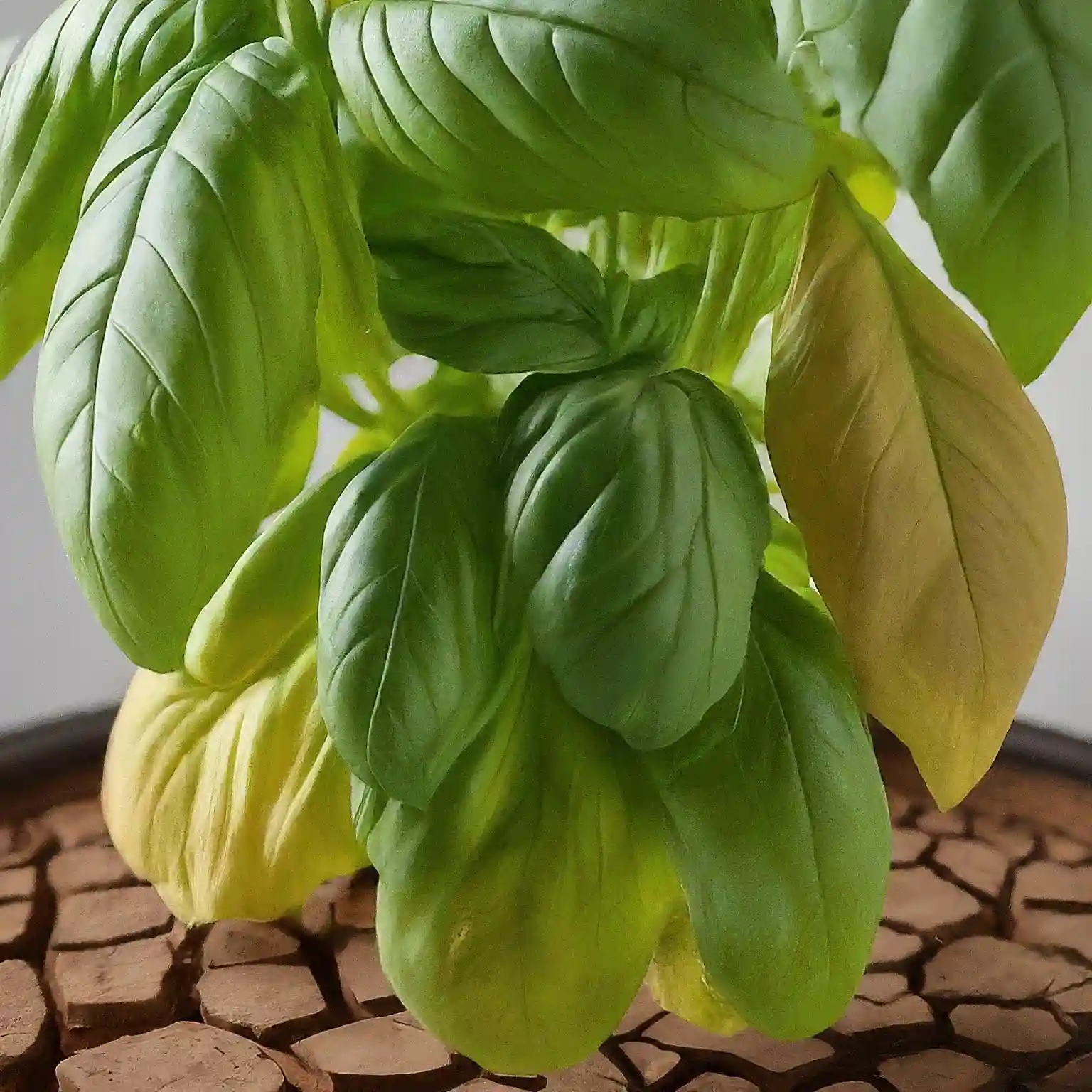How Do You Know If Your Basil Needs More Water?
Basil, with its vibrant green leaves and aromatic fragrance, is a beloved herb used in countless culinary creations. But like all plants, it thrives with proper care, and watering is crucial for its health and growth. Underwatering your basil plant can lead to stunted growth, wilting, and even death. So, how do you know if your basil needs more water?
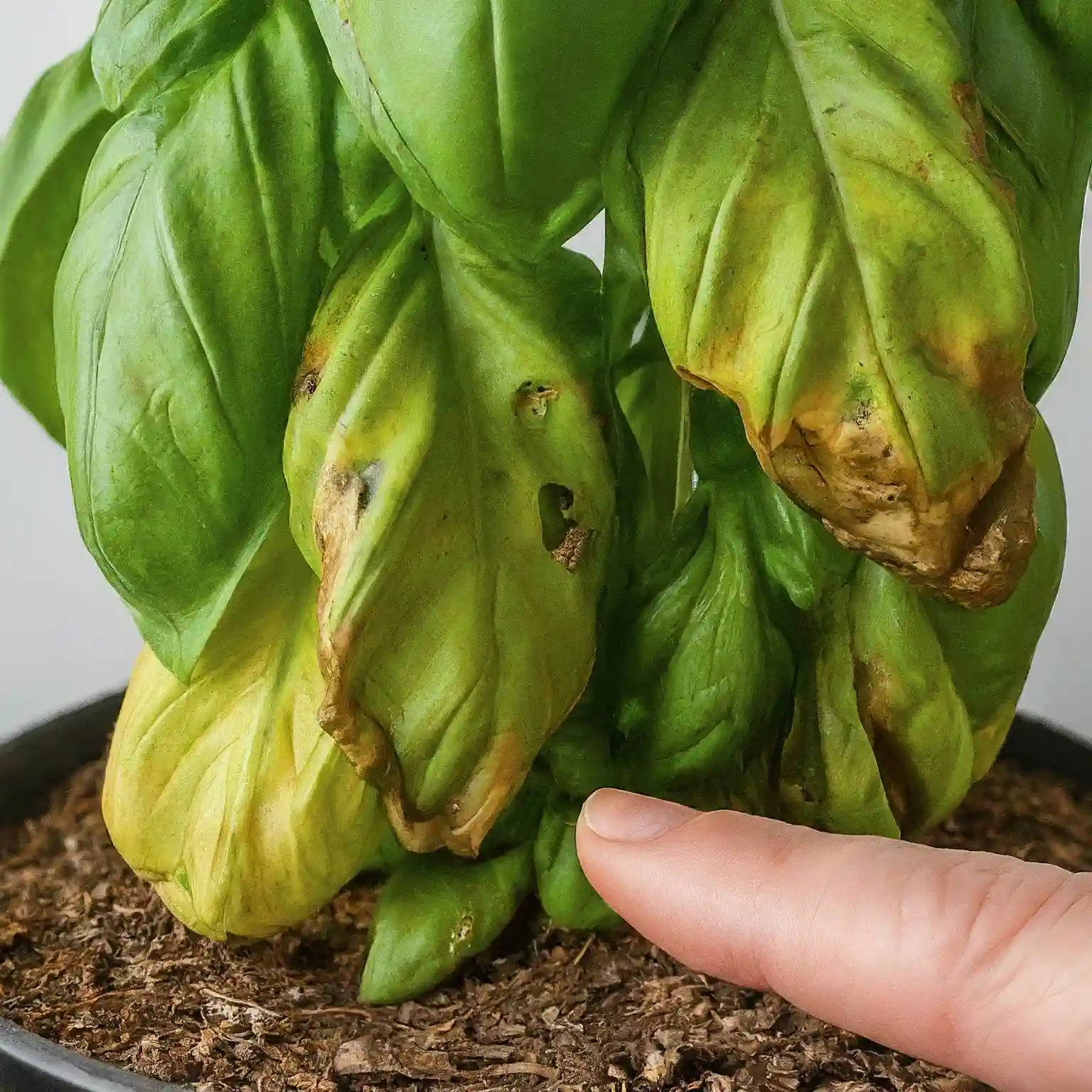
This comprehensive guide will equip you with the knowledge to identify the signs of a thirsty basil plant and provide you with the best practices for watering it for optimal growth and enjoyment.
Recognizing Signs of a Thirsty Basil Plant
While visual cues are often the most apparent indicators of a thirsty basil plant, incorporating a combination of methods for accurate assessment is recommended. Here are the key signs to watch for:
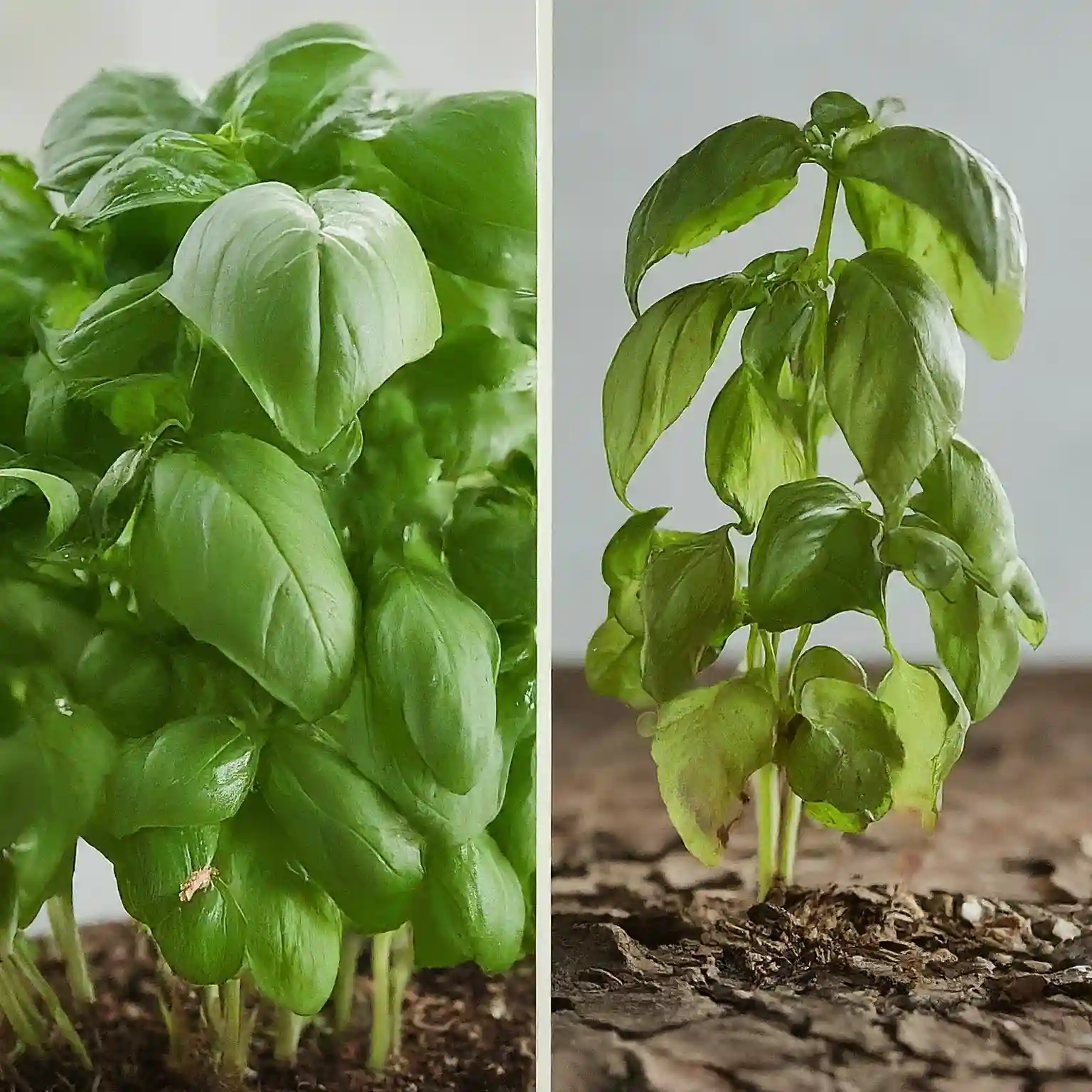
Visual Cues:
- Wilting leaves: The most common sign of underwatering is wilting leaves. These will lose their turgor (firmness) and become limp, drooping downwards or curling at the edges. In severe cases, the entire plant may appear wilted and lifeless.
- Leaf color: Healthy basil boasts vibrant green leaves. However, when underwatered, the leaves may lose their chlorophyll content, leading to a dull or grayish appearance.
- Stems: When your basil lacks sufficient water, the stems may become limp and lose their rigidity.
Feeling the Soil:
This simple yet effective method allows you to directly assess the moisture level in the soil:
- Finger test: Gently insert your finger into the soil, reaching 1-2 inches deep. This is the critical zone where the roots absorb most of the water.
- Interpreting dryness: If the soil feels dry and crumbles easily, it’s time to water your basil. Conversely, moist soil should feel slightly damp and hold its shape when you gently squeeze it.
Pot weight:
Lifting your basil plant can also provide clues about its watering needs:
- Lightweight pot: A pot that feels significantly lighter than usual compared to when well-watered is an indicator of dry soil. This is because dry soil weighs less than moist soil.
Remember, these signs don’t necessarily mean your plant is overwatered. Refer to our guide on can you overwater basil plants? to learn the distinctions and ensure proper care.
Watering Your Basil for Optimal Growth
Now that you’ve mastered identifying the signs of a thirsty basil plant, let’s explore how to water it effectively:
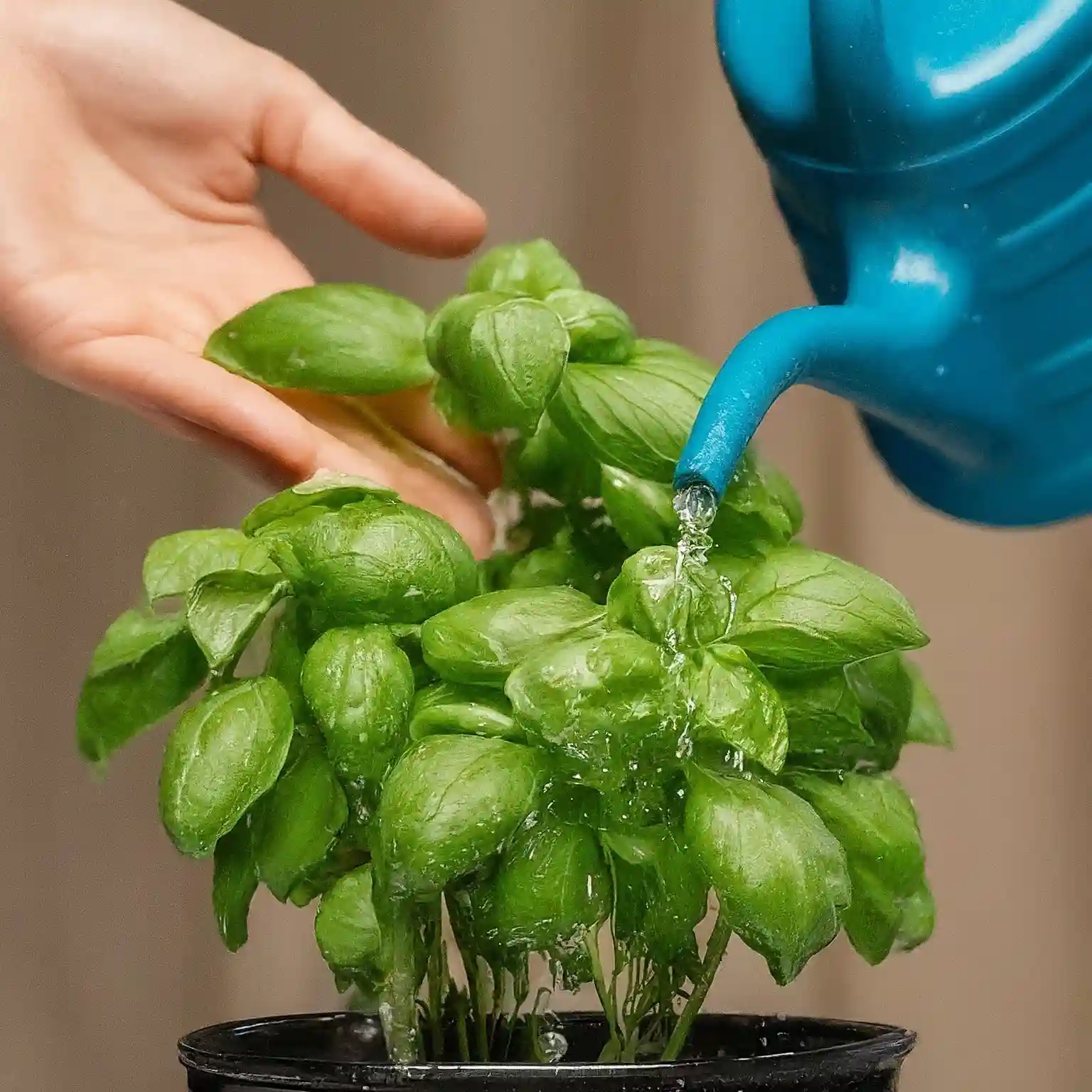
Frequency:
- General guideline: As a general rule, water your basil plant when the top 1-2 inches of soil feel dry to the touch. This ensures the roots receive adequate moisture without risking overwatering.
- Adjusting for specific conditions: Remember, this is a general guideline. Several factors can influence your basil’s water needs:
- Sunlight and temperature: Basil thrives in warm, sunny conditions. However, increased sunlight and hot weather can lead to faster water evaporation from the soil, requiring more frequent watering. Conversely, cooler temperatures and less sunlight may necessitate less frequent watering.
- Pot size and drainage: Plants in smaller pots with limited soil volume dry out quicker than those in larger pots. Additionally, ensure your pot has adequate drainage holes to prevent waterlogging, which can suffocate the roots.
- Plant size and stage: Larger plants naturally require more water than smaller ones. Similarly, basil plants in the flowering stage will need more water to support flower production.
Watering technique:
Proper watering technique is essential for promoting healthy basil growth:
- Thorough watering: Water your basil plant deeply, allowing the water to reach the roots. This encourages healthy root development and helps the plant retain moisture for longer.
- Soak and drain: Water slowly and steadily until water begins to drain from the drainage holes at the bottom of the pot. This ensures the entire root zone receives moisture. However, avoid letting the pot sit in water, as this can lead to root rot.
- Avoid overhead watering: Watering directly on the leaves can promote fungal diseases and damage delicate foliage. Instead, focus on watering the soil directly.
- Watering times: Watering in the morning or evening is generally recommended. This minimizes water evaporation, especially during hot weather when the sun is intense.
By following these tips and adjusting based on the specific needs of your basil plant, you can ensure it receives the optimal amount of water for healthy and thriving growth.
Preventing Underwatering and Keeping Your Basil Happy
Now that you’re equipped with the knowledge to identify your basil’s water needs and proper watering techniques, let’s explore strategies to prevent underwatering and keep your basil thriving:
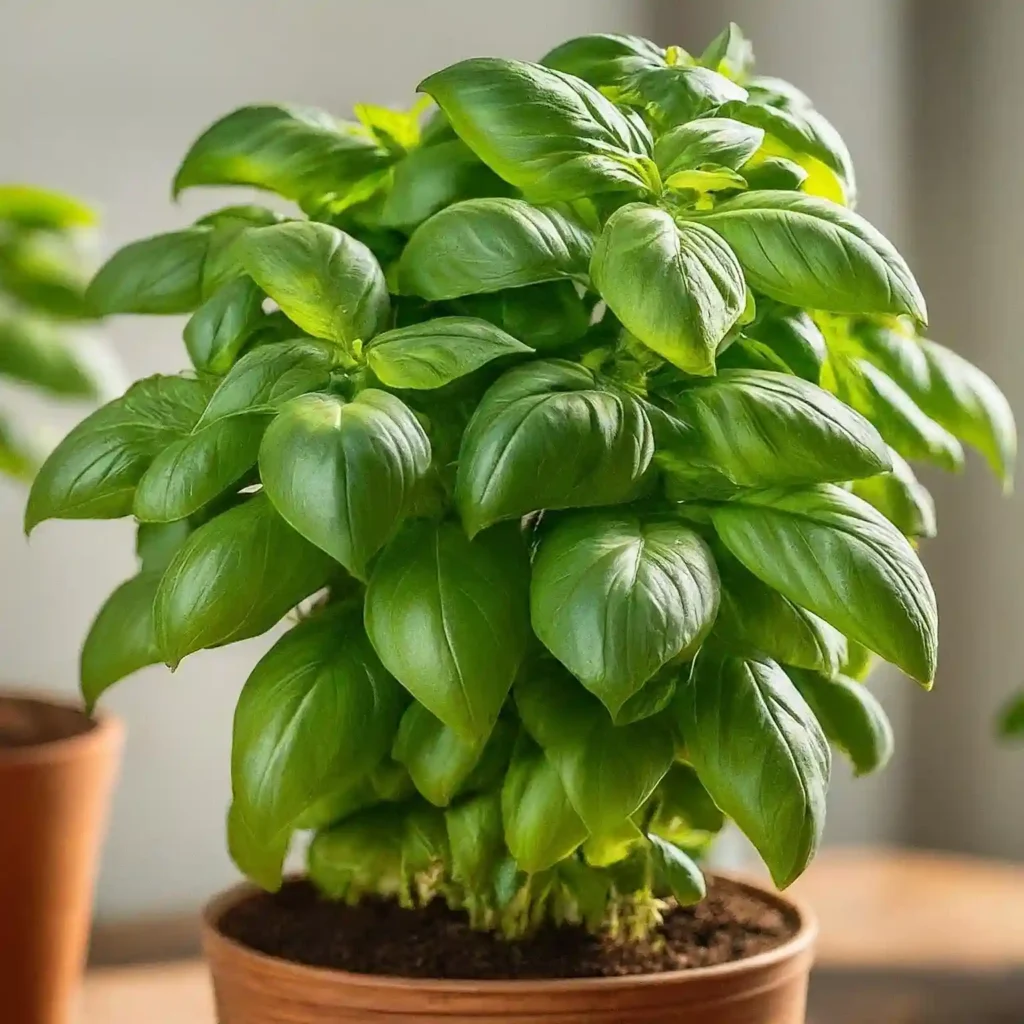
Mulching:
Applying a layer of organic mulch around the base of your basil plant can significantly help retain moisture in the soil by:
- Reducing evaporation: Mulch acts as a barrier, slowing down the rate at which water evaporates from the soil surface.
- Moderating soil temperature: Mulch helps regulate soil temperature, keeping it cooler in the summer and warmer in the winter, creating a more consistent environment for your basil.
- Suppressing weeds: Mulch can help suppress weed growth, which can compete with your basil for water and nutrients.
Choose organic materials like shredded bark, straw, or compost for mulching. Apply a layer of 1-2 inches around the base of the plant, keeping the mulch a few inches away from the stem to prevent stem rot.
Choosing the right pot:
The type of pot you choose can also impact how quickly your basil dries out. Here are some factors to consider:
- Material: Clay pots are generally better than plastic pots for basil because they allow for better airflow and prevent the soil from becoming soggy. However, clay pots can dry out faster than plastic ones, so you may need to water more frequently.
- Drainage: Ensure your pot has adequate drainage holes to prevent waterlogging. Excess water can suffocate the roots and lead to root rot.
Grouping plants:
Grouping your basil plants together can help create a humid microclimate around them. This reduces water loss through transpiration (the process by which plants release water vapor into the atmosphere) and can help keep your basil plants hydrated for longer.
Monitoring closely:
Developing a routine to check your basil regularly is crucial, especially during hot weather or periods of high winds, as these can dry out the soil quickly. By being proactive and addressing your basil’s water needs promptly, you can prevent underwatering and ensure its continued health and growth.
Remember, a thriving basil plant not only adds vibrancy and flavor to your culinary creations but also boasts several health benefits. By following these tips and providing your basil with the proper care, you can enjoy its beauty and bounty for longer.
For further information on various aspects of basil care, explore our comprehensive guides on our website, Basil Secrets.
By equipping yourself with the necessary knowledge and implementing these practices, you can become a confident basil gardener and unlock the full potential of this versatile and rewarding herb.
Conclusion:
In conclusion, maintaining a healthy and thriving basil plant requires understanding its water needs and providing it with the right amount of moisture. By incorporating the techniques and strategies outlined in this guide, you can prevent underwatering and ensure your basil receives the optimal hydration for optimal growth.
Recap:
- Signs of a thirsty basil plant: Wilting leaves, dull leaf color, limp stems, and a lightweight pot.
- Watering frequency: Water when the top 1-2 inches of soil feel dry, adjusting for sunlight, temperature, pot size, and plant stage.
- Watering technique: Water deeply and thoroughly, avoiding overhead watering. Water in the morning or evening.
- Preventing underwatering: Use mulch, choose the right pot, group plants together, and monitor your basil regularly.
By following these tips and providing your basil with consistent care, you’ll be rewarded with a bountiful harvest of fragrant leaves, enhancing your culinary creations and adding a touch of freshness to your home. Remember, a happy basil plant is a delicious and rewarding addition to any garden or kitchen.
FAQs:
Q: How often should I water my basil plant?
A: As a general rule, water your basil plant when the top 1-2 inches of soil feel dry to the touch. However, this can vary depending on several factors such as sunlight, temperature, pot size, and plant stage.
Hot and sunny weather: You may need to water your basil more frequently, perhaps daily or every other day.
Cooler and less sunny weather: Watering every few days might be sufficient.
Larger plants or those in flower: These will require more water than smaller plants.
Q: My basil leaves are wilting, does that mean it needs water?
A: Wilting leaves are a common sign of underwatering, but not always. Other factors like extreme heat, pests, or disease can also cause wilting. Check the soil moisture and if it’s dry, water your plant thoroughly. If the wilting persists even after watering, it’s best to investigate other potential causes.
Q: Is it okay to water my basil from above?
A: While it’s not necessarily harmful, it’s generally recommended to avoid watering directly on the leaves. This can promote fungal diseases and damage delicate foliage. Instead, focus on watering the soil directly at the base of the plant.
Q: Can I use leftover coffee or tea to water my basil?
A: It’s not advisable to use leftover coffee or tea to water your basil regularly. While the occasional use might not be detrimental, these beverages can alter the soil pH and nutrient balance, potentially harming your plant in the long run. Stick to plain water for optimal basil care.
Q: How can I tell if I’m overwatering my basil?
While underwatering is a common concern, overwatering can also be detrimental to your basil. Signs of overwatering include yellowing leaves, mushy stems, and stunted growth. If you suspect overwatering, allow the soil to dry out completely before watering again and ensure your pot has adequate drainage.
